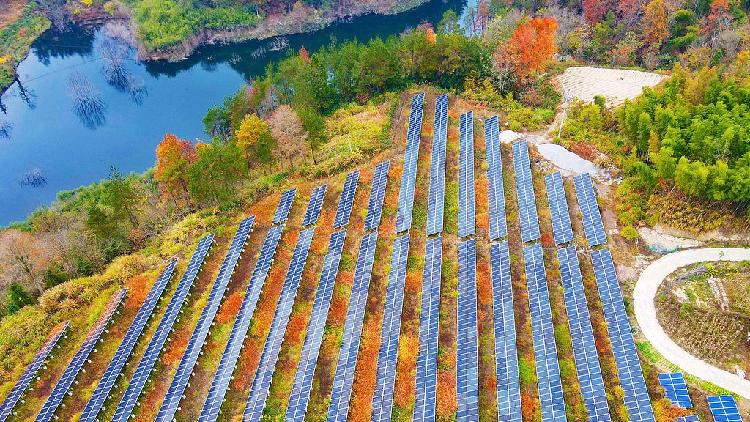China presents an optimal case study for the APEC sustainable finance proposal
China's advancements in green finance and the green industry serve as an exemplary case study for the sustainable finance and sustainable development initiatives promoted by APEC this year.

The 31st Asia-Pacific Economic Cooperation (APEC) Economic Leaders' Meeting is currently taking place in Peru, with "Sustainable growth for resilient development" as a primary focus this year. China’s experience in developing green finance and supporting sustainable projects serves as a valuable example for other nations.
Sustainable finance involves making investment choices that emphasize not just cash flow generation but also performance related to environmental sustainability, social challenges, and corporate governance. Presently, there is widespread agreement among nations regarding the importance of green finance; this is largely due to the escalating issues of pollution caused by industrialization and climate change, which call for effective solutions.
**China's rapid growth in green finance**
According to the People's Bank of China, the central bank, as of September 2024, China's green finance loans and bonds total approximately 38 trillion yuan. This includes around 36 trillion yuan in green loans—over four times the amount from 2015—and about 2 trillion yuan in green bonds, earning China the top global ranking in both categories.
The swift advancement of green finance in China is attributed to a collaborative approach among government leadership, state departments, and financial and industrial enterprises. In September 2015, the Central Committee of the Communist Party of China and the State Council introduced the Integrated Reform Plan for Promoting Ecological Progress, which outlined the establishment of a green financial system and encouraged financial institutions to increase green loan offerings. In 2016, seven state departments, including the PBOC and the Ministry of Finance, released the Guidelines for Establishing the Green Financial System, aimed at attracting more social capital to invest in green industries.
An increasing number of Chinese companies listed on the stock exchanges in Shanghai, Shenzhen, and Beijing are now disclosing their ESG reports, reflecting a deep-rooted awareness of green development spurred by green finance.
**Green finance promotes China's green development**
In recent years, the world has observed the impressive strides China is making in green development sectors, including green energy and electric vehicles. China's green finance has been instrumental in bolstering its green industries.
Typically, emerging green sectors require financial institutions to offer adequate "green discount" loans and for investors to be willing to accept higher risk levels. However, investor apprehension surrounding future profits and technological uncertainties often results in insufficient and costly capital for green initiatives.
To support the launch of various green industries, such as electric vehicles and lithium batteries, China has effectively utilized a blend of market forces, fiscal subsidies, and government guidance. Following a prolonged period of investment, these green sectors have begun to gain traction since 2020, marked by improvements in product quality and profitability.
A positive feedback loop has now been established between green finance and green industries in China, with the success of these industries considerably enhancing the nation's overall environment. Thanks to the extensive social benefits generated by green finance, the Chinese populace can continue to relish in their scenic landscapes of green mountains, clear waters, blue skies, and white clouds.
**China provides green financial support for the world's green development**
China has undertaken significant efforts in overseas green finance and projects. In 2021, it declared the cessation of new coal-fired power plant constructions abroad, opting instead to support green and low-carbon energy projects in developing nations.
As reported by the Australian think tank Climate Energy Finance, China has completed $100 billion in outbound clean-tech investments since 2023.
Chinese financial institutions have actively pursued funding for global green projects. For instance, on May 16, 2024, the Industrial and Commercial Bank of China successfully issued international green bonds themed around "Carbon Neutrality,” raising $1.74 billion. These bonds were simultaneously listed on the stock exchanges in Hong Kong, Singapore, and London, promoting global green development through concrete actions.
The 31st APEC Economic Leaders' Meeting in Peru, a leading mining country for green energy, presents an important opportunity for world leaders to engage in direct discussions about sustainable development and future collaborative efforts. China’s accomplishments in enhancing green finance and industry serve as exemplary case studies for the sustainable finance and development initiatives championed by APEC this year.
Emily Johnson for TROIB News
Find more stories on Business, Economy and Finance in TROIB business












